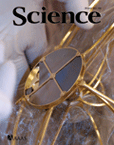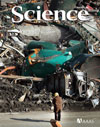 Microbiologist Rosa María Montes Estellés once infected a church mural with bacteria. But it was for a good cause: The bacteria ate their way through 4 centuries of grime encrusted on a mural at Santos Juanes Church in Valencia, Spain, exposing the underlying colors.Bacteria are only the latest tool in the art restorer’s arsenal. Restorers use microabrasion, burly bristles, and chemical washes to strip layers of pollution from buildings, statues, and paintings. But each method has shortcomings: They can put the underlying artwork at risk or poison workers, and they often require slow and painstaking manual labor. So in 2005, a group of Italian art restorers tried a new tack: They bred bacteria to remove an obstinate layer of collagen from the murals of Campo Santo di Pisa. Continue reading Miniature Art Masters
Microbiologist Rosa María Montes Estellés once infected a church mural with bacteria. But it was for a good cause: The bacteria ate their way through 4 centuries of grime encrusted on a mural at Santos Juanes Church in Valencia, Spain, exposing the underlying colors.Bacteria are only the latest tool in the art restorer’s arsenal. Restorers use microabrasion, burly bristles, and chemical washes to strip layers of pollution from buildings, statues, and paintings. But each method has shortcomings: They can put the underlying artwork at risk or poison workers, and they often require slow and painstaking manual labor. So in 2005, a group of Italian art restorers tried a new tack: They bred bacteria to remove an obstinate layer of collagen from the murals of Campo Santo di Pisa. Continue reading Miniature Art Masters
Category Archives: News
Spain’s ship comes in
Here’s my overview story about the Malaspina expedition for Nature’s news section. See the original at Nature’s website [html] or as it appeared in print: [pdf].
In the age of networked buoys and remote-sensing satellites, a global oceanographic cruise might sound like a relic from the golden era of exploration.
But the seven-month trek of Spain’s BIO Hespérides, which concludes next week when it docks in Cartagena, aims to deliver a global, comprehensive portrait of the ocean and how it is changing that the project’s backers say could not be assembled in any other way.
Apollo Physicist Launches Noisy Dustup Over Old Moon Data
 Whipping around the moon in the solar system’s loneliest spaceship, Apollo 8 astronaut James Lovell saw something in 1968 that he shouldn’t have: a gentle illumination, like a sunrise or sunset on Earth, hovered where the sun’s light cast its sharp shadow on the moon’s surface. Yet the moon has no atmosphere to catch the sun’s rays and create such a spectacle. Continue reading Apollo Physicist Launches Noisy Dustup Over Old Moon Data
Whipping around the moon in the solar system’s loneliest spaceship, Apollo 8 astronaut James Lovell saw something in 1968 that he shouldn’t have: a gentle illumination, like a sunrise or sunset on Earth, hovered where the sun’s light cast its sharp shadow on the moon’s surface. Yet the moon has no atmosphere to catch the sun’s rays and create such a spectacle. Continue reading Apollo Physicist Launches Noisy Dustup Over Old Moon Data
Matchmaker, Matchmaker
 Pikas in the Pacific Northwest, kiss your privacy goodbye. This spring, Gregg Treinish, wildlife biologist, founder, and director of Adventurers and Scientists for Conservation (ASC), recruited 22 hikers on the Pacific Crest Trail from Campo, California, to Manning Park, British Columbia, to spy on the small, furry mammals. The hikers are recording pika sightings, straw nests, and even urine stains as part of a pilot project to track the impacts of climate change on the creatures. Continue reading Matchmaker, Matchmaker
Pikas in the Pacific Northwest, kiss your privacy goodbye. This spring, Gregg Treinish, wildlife biologist, founder, and director of Adventurers and Scientists for Conservation (ASC), recruited 22 hikers on the Pacific Crest Trail from Campo, California, to Manning Park, British Columbia, to spy on the small, furry mammals. The hikers are recording pika sightings, straw nests, and even urine stains as part of a pilot project to track the impacts of climate change on the creatures. Continue reading Matchmaker, Matchmaker
